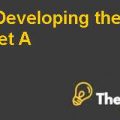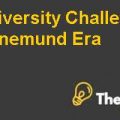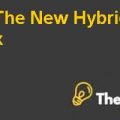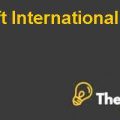Virginia Mason And Owens & Minor (A) Case Solution
it also enables the company in identifying performing areas, which helps the company in increasing its value, thereby directing the management’s attention towards the performing units.
In comparison of the current cost plus model with the Total Supply Chain Cost model; it is concluded that the TSCC model is very complicated, which leads towards high chances of errors. The O&M follows the cost plus pricing model by charging a 7% margin over the cost, for its services. The cost plus pricing model is very simple as it enables the O&M to have a clear estimate of the expenditures and to charge 7% over the cost for its services. The model is very convenient for the management, as it does not create any complexity, which ultimately leadtowards lower chances of errors.
However, in the Total Supply Chain Cost Model;many drivers are involved in calculating different cost and overheads. The cost estimation through different cost drivers lead towards a greater probability of errors and there is also the possibility of assigning wrong costs to the wrong pools, ultimately deriving wrong overall cost estimations. So, comparatively, TSCC is a more complex model for cost calculations as compared to the cost plus pricing model.
On the other hand; the cost plus pricing model has its own disadvantages in comparison to the TSCC model. The cost plus pricing model is based on the historic-cost analysis, in which the price is determined by adding the margin into the costs. There are more chances of inefficiencies in the cost plus pricing model, because it is based on the previous (past) figures. These inefficiencies are expected to be transferred into future,but if the company uses the TSCC model; it will be able to identify the reasons behind such cost inefficiencies, and by doing so, the company would be able to take the necessary action to eliminate the elements responsible for the creation of such inefficiencies in the cost determination. The TSCC model also helps in determining better cost estimations for future.
Similarly, the cost plus model does not consider other factors in contrary to which TSCC model does consider other factors,for instance: the cost plus model does not take into account the action by other players in the industry and it does not thrive for the identification and removal of defects, whereas; the TSCC model includes the competitors’ actions and helps the company in determining and resolving the cost inefficiencies. Conclusively,the TSCC method appears to be a better pricing model as it reduces the waste and cost levels of the company. However, the TSCC model is more complex and is very difficult to be implemented across the whole supply chain......................
Virginia Mason And Owens & Minor (A) Case Solution
This is just a sample partial case solution. Please place the order on the website to order your own originally done case solution.













